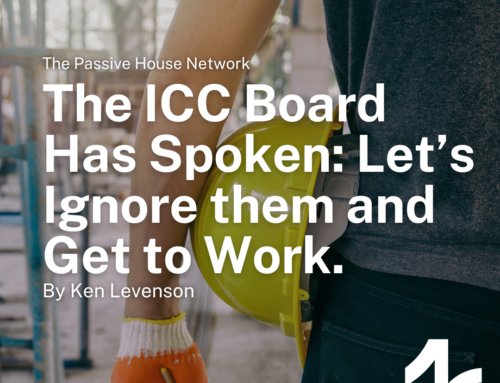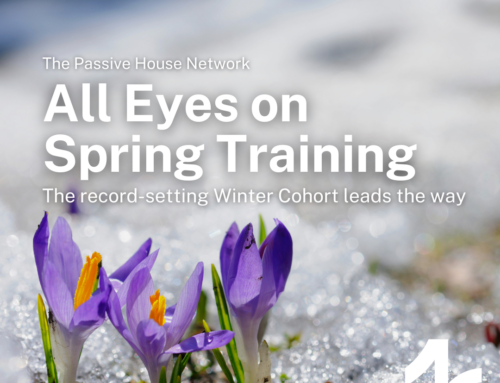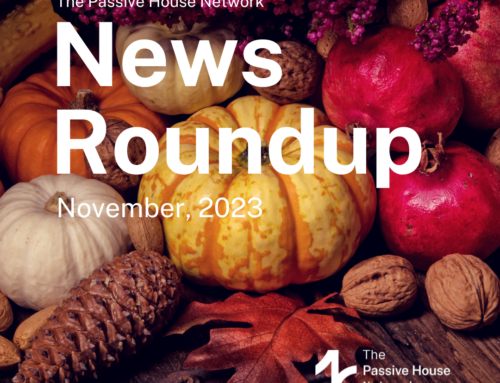We will miss walking into Passive House buildings as part of the conference experience this year – the personalities, the stories, the details, and the context that help bring alive the possibilities. So while we can’t do it in-person, locally, we have the opportunity to visit buildings from anywhere and everywhere.
Are you experienced? If so, tell us about it. Tell us the story of your building project, wherever it is! We’ll show as many of the videos as we can at the conference – about 15 to 20 – and those we can’t fit, we’ll show later online. And like the in-person tours, we want you to do live Q&A while the tour is broadcast at the conference. Your winning team will receive free conference registrations.
So, please read carefully, and get your great project submitted by May 29! We need your virtual building tours, wherever you are. Read the guidelines and then fill out the entry form, HERE.
Competition Guidelines
- Introduction:
- Tell the story of your building – in English please – using specific examples. But it should not be an encyclopedia of construction specifics, we want to hear about the people and the journey too.
- 5-10 minutes in length.
- Winning entries will be edited to hit overall conference session timings needed.
- Tours that aren’t selected for the conference may be posted to the NAPHN website after the conference.
- Projects can be any size, but the bigger, the better.
- Projects need to have a completed PHPP and a clear understanding of where it hits regarding the international Passive House standard. While certified projects or those seeking certification are preferable, It does not need to be certified.
- If possible, the video should be mainly shot on the job site – no matter the phase of construction from an open foundation to finished and occupied. However, if stay-at-home orders in your area preclude this, a “slide show” of previously taken job site photos is acceptable.
- Video may be submitted in several sequential clips, to be edited together by NAPHN, but should not, in total, exceed 10 minutes.
- Phone videos are acceptable if picture and audio are clear.
- Videos submitted are for the exclusive use of NAPHN until the end of the conference. After the conference, NAPHN reserves the right to use the videos, but not exclusively.
- Submitters commit that if they win, they will attend the conference session it is scheduled for, and answer questions about the project during the session.
- Should/could include (not enough time for all this, be strategic: what’s special?)
- Basic project information:
- Place, dates, status
- Team members
- Programmatic description
- Size
- Dates
- Current phase
- PHPP targets
- Components/Systems:
- Orientation/solar shading
- Envelope – insulation, airtightness, moisture control
- windows/doors
- Ventilation
- Heating/Cooling
- Hot water
- Other systems such as renewables, as appropriate.
- Assemblies
- Ground
- Walls
- roofs
- What makes the project special – what’s the story?
- Use specific examples.
- Humor and joy. Have fun!
- May include:
- Images of drawings, details, models, samples, or progress pictures as helpful to describe.
- Statements from multiple project professionals.
- Don’t:
- Include product advertising. You can mention the product names and be explicit but keep it about the building and not the brands.
- Include inaudible or unintelligible or visually confusing clips.
- Readout information as a list.
- Make stuff up.
- 6 Tips for How to make good videos using your smartphone:
- Always record in horizontal format (hold the phone sideways!)
- Keep it smooth and steady – use both hands to hold the phone while recording
- Use classic compositions – don’t stand in the middle of the screen, stand on one side or capture views that are visually compelling.
- Avoid glare and filming into direct sunlight. Make the lighting even and use it to your advantage.
- Vary the content by including larger images and information, but then break it up by going into detailed close-ups for items of particular interest.
- Try to capture good audio or record the sound narrative separately and edit later.
We thank you in advance for your participation. Good luck! And remember, fill-out the entry form and submit before the deadline, May 29.




